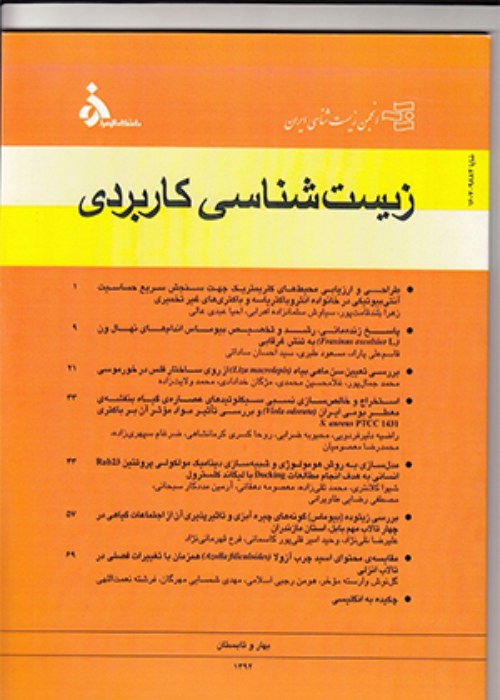Isolation and identification of biodeteriorating phototrophs from Pasargadae
Abstract:
Pasargadae set of ancient structures remaining from the Achaemenid impire are located in Fars province, Iran. Tomb of Cyrus the Great, which is made of limestone placed in the southern part of this area. Like any other stone, the building has been influenced by physico-chemical and biological factors. Biodeterioration of materials is an irreversible process which materials and equipment under the influence of the micro and macroorganisms are degraded and causes massive economic losses. Almost all microorganisms are in the destructive biofilm form on the external surfaces of the monuments and phototrophic microorganisms preparing suitable condition for the growth of other organisms. The effects of these organisms are particularly important in the context of biodeterioration. BG-11, MKM, BBM medium was used for isolation of phototrophs. Stereomicroscope and scanning electron microscope (SEM) was done to observe the biological structures and the pattern of deteriorating alteration on the surface of the substratum. To identify the phototrophic populations, cultivation method was used. During this study, several species of microorganisms, including algae and cyanobacteria in biofilm structure, were isolated. Most of these species were sampled from the inside of tomb that displays more suitable conditions for phototrophic growth. Stereomicroscopic observation and SEM images revealed that microorganisms were better located within the cavities of the stone, where the intensity of light is optimum for phototroph growth. In this study, the most frequent type of biodeteriorant algae belong to Trebouxia sp., Chlorococcum sp. and Trentepohlia sp. For cyanobacteria, the genus of Chroococcus sp., Oscillatoria sp., Microcystis sp., Aphanothece sp., andLyngbya sp. were dominant cyanobacteria. The first step in eliminating orcontrolling the growth of deteriorating microorganisms is their isolation andidentification. Thus, the present study was carried out to isolate and identifyinvolved microorganisms. Further investigation should be done to find the bestmethod to clean the surfaces of the stone.
Keywords:
Language:
Persian
Published:
Journal of Applied Biology, Volume:27 Issue: 2, 2014
Pages:
107 to 117
magiran.com/p1397033
دانلود و مطالعه متن این مقاله با یکی از روشهای زیر امکان پذیر است:
اشتراک شخصی
با عضویت و پرداخت آنلاین حق اشتراک یکساله به مبلغ 1,390,000ريال میتوانید 70 عنوان مطلب دانلود کنید!
اشتراک سازمانی
به کتابخانه دانشگاه یا محل کار خود پیشنهاد کنید تا اشتراک سازمانی این پایگاه را برای دسترسی نامحدود همه کاربران به متن مطالب تهیه نمایند!
توجه!
- حق عضویت دریافتی صرف حمایت از نشریات عضو و نگهداری، تکمیل و توسعه مگیران میشود.
- پرداخت حق اشتراک و دانلود مقالات اجازه بازنشر آن در سایر رسانههای چاپی و دیجیتال را به کاربر نمیدهد.
In order to view content subscription is required
Personal subscription
Subscribe magiran.com for 70 € euros via PayPal and download 70 articles during a year.
Organization subscription
Please contact us to subscribe your university or library for unlimited access!


